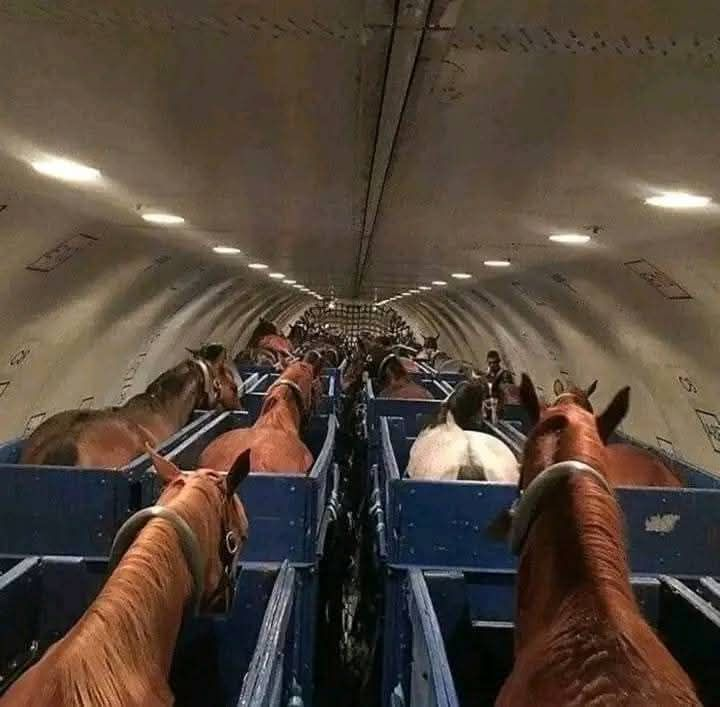Transporting horses by plane is far from a simple task. Unlike passengers or standard cargo, horses are large, sensitive animals that require careful handling to ensure their safety and comfort during a flight. To make this possible, airlines and specialized transport companies have developed highly engineered solutions that allow horses to travel long distances without stress or injury.
When horses are flown, they are placed in specially designed compartments. These spaces are carefully structured to limit movement, preventing the animals from accidentally injuring themselves during turbulence or takeoff. Unlike standing loosely in a trailer, the horses are secured with padded straps that support their bodies while still allowing a natural stance. This arrangement ensures that they can balance comfortably and reduces the risk of falls or joint strain.
But physical restraint is only part of the story. Horses are also extremely sensitive to environmental changes, so the compartments are equipped with advanced temperature control systems and proper ventilation. This creates a stable, calm environment that mimics their natural surroundings as closely as possible. Maintaining an appropriate climate is essential because horses can become stressed or overheated, which could lead to health complications during flight.

Moreover, horses are never left alone while airborne. Specialized personnel accompany them, monitoring their behavior and well-being throughout the journey. These trained professionals provide reassurance, check that the animals stay hydrated, and intervene if any signs of anxiety or discomfort arise. This level of care ensures that horses remain calm, reducing the likelihood of flight-related stress or injury.
The preparation for air travel begins well before the horses even board the plane. Animals are gradually introduced to the restraints and compartments to familiarize them with the environment, allowing them to adapt to the confined space and limited movement. In some cases, they even undergo mock flights or training sessions to reduce anxiety and improve cooperation during the actual journey.
The attention to detail doesn’t stop there. Transport teams also meticulously plan the logistics of the flight, including boarding procedures, weight distribution, and emergency contingencies, all to provide a smooth, safe experience for these magnificent creatures.
In short, flying horses is a combination of science, engineering, and compassionate care. It’s an intricate operation that showcases just how much thought and expertise goes into moving animals safely across the globe. For anyone who thought air travel was only for humans, the next time you see a horse stepping off a plane, remember the incredible journey it endured—secure, calm, and well-cared-for, every step of the way.